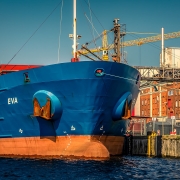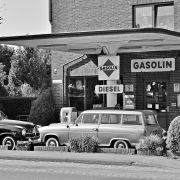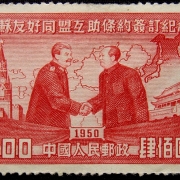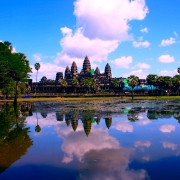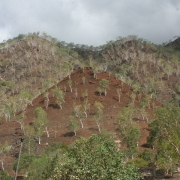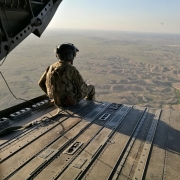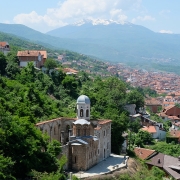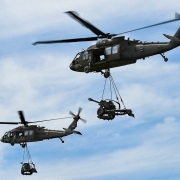How did trade protectionism affect economies in the 1970s?
Why did countries engage in trade protectionism?
In view of the Golden Age of Capitalism that took place from 1945 to 1973, the Bretton Woods System was established, in which the General Agreements on Tariffs and Trade (GATT) facilitated the liberalization of world trade. Over time, free trade seemingly proved beneficial to trading partners, as evidenced by benefits like access to larger markets and cheaper raw materials.
However, international trade also meant that firms were open to more intense forms of competition. Clearly, developing nations were disadvantaged due to obstacles like inadequate infrastructural support and financing. In contrast, developing nations possessed the capacity to support their multinational corporations (MNCs) in maintaining international competitiveness. Therefore, some member nations gradually imposed trade protectionism, thus reversing the liberalization effects caused by GATT.
Topic of Study [For H2 History Students]:
Paper 1: Understanding the Global Economy (1945-2000)
Section B: Essay Writing
Theme II Chapter 2: Reasons for problems of the global economy
In the subsequent sections, we will study the limitations of free trade and the methods of protectionism that eventually caused the slowdown in the growth of the global economy in the 1970s and 1980s. Students should pay attention to the significance of trade protectionism with respect to other contributing factors that affect the Crisis Decades, such as the Third World Debt Crisis and the Oil Shocks.
1. Limitations of Free Trade
Although free trade is arguably beneficial to most economies, critics of economic liberalization remained hesitant to embrace this policy approach.
One reason is that free trade leaves many economies vulnerable to the volatile international markets. Trade-oriented growth can be disastrous as the fluctuating business cycles determine the growth and decline of economies.
Furthermore, should firms remain incapable of coping with international competition, their closure results in the rise of unemployment, thereby jeopardizing the social and political stability of nations.
2. [Developed Nations] Trade Protectionism: Rise of Non-Tariff Barriers (NTBs)
As such, governments in the industrial world introduced protectionism. In general, these measures can be grouped under a common type, known as ‘non-tariff barriers’ (NTBs).
NTBs comprised of different versions, like the provision of subsidies to local goods, strict standards and voluntary export restraints (VERs). For example, the US introduced the VERs in the 1980s, which affected the Japanese automakers. The US government perceived the increasingly popular Japanese automobile exports to be a significant threat to its trade position. In 1981, US introduced a VER in which Japan was pressured to reduce its export volume of cars. This created an artificial shortage of Japanese exports, thus raising their prices. As such, American automakers could profit from this effect.
Consequently, the share of imports restricted by NTBs increased extensively in the developed world, such as USA and Japan, thus causing a fall in the world output.
3. Consequences: A slowdown in the global economy
As a result of trade protectionism, the world economy experienced a major slowdown, which was further exacerbated by other problems like the Oil Shocks and the Third World Debt Crisis.
For example, the imposition of trade protectionism meant that MNCs were less mobile. Therefore, the the surge in market pessimism caused the decline in trading and investment activities. Given that these economies activities are vital for growth, the use of protectionist measures resulted in the economic slowdown in many developed nations.
What can we learn from this case study?
Consider the following questions to understand this economic issue:
– How far do you agree that the Crisis Decades was primarily caused by the rise of trade protectionism in the 1970s? [to be discussed in class]
In view of the trade protectionism problem that undermined the development of the global economy, we advise students to apply this knowledge to JC History essay questions. This is to ensure that what you know can be understood and applied effectively. Join our JC History Tuition and learn to synergize your knowledge of various factors to form persuasive and logical arguments. We teach students to do factor analysis and comparison through numerous class practices and discussions.
The H2 and H1 History Tuition feature online discussion and writing practices to enhance your knowledge application skills. Get useful study notes and clarify your doubts on the subject with the tutor. You can also follow our Telegram Channel to get useful updates.
We have other JC tuition classes, such as JC Math Tuition and JC Chemistry Tuition. For Secondary Tuition, we provide Secondary English Tuition, Secondary Math tuition, Secondary Chemistry Tuition, Social Studies Tuition, Geography, History Tuition and Secondary Economics Tuition. For Primary Tuition, we have Primary English, Math and Science Tuition. Call 9658 5789 to find out more.

